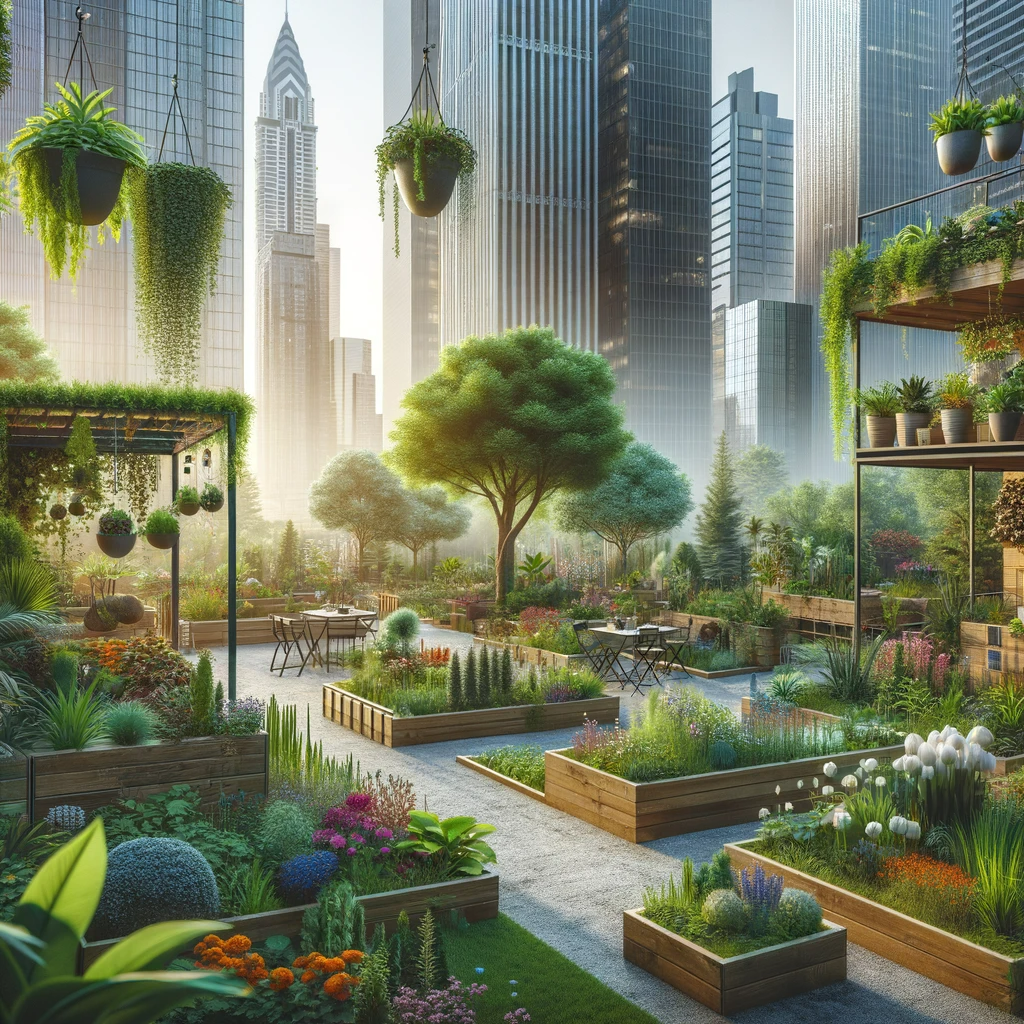All About Urban Gardens: A Guide

Introduction to Urban Gardening
Urban gardening has emerged as a transformative way to bring nature into urban spaces, enhance local food production, and foster community engagement. As city landscapes become increasingly concrete-dominated, the allure of urban gardens has grown, offering a slice of serenity and a source of fresh produce in the heart of bustling cities.
What is Urban Gardening?
Urban gardening involves cultivating plants and vegetables in an urban environment. This practice can take various forms – from small container gardens on balconies to large community gardens in vacant lots. Urban gardens are not just limited to vegetables; they can include herbs, fruits, flowers, and even small livestock like chickens.
Benefits of Urban Gardening
Environmental Impact
Urban gardens contribute significantly to improving air quality and reducing the urban heat island effect. Plants absorb carbon dioxide and emit oxygen, making city air fresher and cleaner. Additionally, the greenery helps to moderate urban temperatures.
Health and Wellness
Gardening is an excellent physical activity and has been shown to reduce stress. Growing your own food can also lead to a healthier diet, with easy access to fresh, organic produce.
Community Building
Urban gardens often become community hubs, fostering social interaction and community development. They provide a space for people of diverse backgrounds to come together, work collaboratively, and share the fruits of their labor.
How to Start an Urban Garden
Choosing the Right Location
The first step in starting an urban garden is to find a suitable space. It could be a balcony, rooftop, window sill, or a shared community space. The key is to find a spot that receives ample sunlight.
Selecting Plants
Choose plants that are suitable for your specific environment and climate. Consider the amount of sun and shade your garden will receive and select plants that will thrive in those conditions.
Soil and Containers
Urban gardening often requires containers. Select containers that are large enough to accommodate the root systems of your chosen plants. Use high-quality potting soil to ensure your plants receive the nutrients they need.
When to Plant
The best time to plant depends on your local climate and the type of plants you are growing. Most vegetables and herbs are best planted in early spring after the last frost.
Maintaining Your Urban Garden
Watering
Regular watering is crucial, especially for container gardens. The frequency of watering will depend on the climate and the types of plants you have.
Pest Control
Pest control is an important aspect of maintaining a healthy urban garden. Use natural pest control methods to avoid harming the environment.
Harvesting
Harvest your produce regularly to encourage further growth. Enjoy the fruits of your labor by incorporating fresh produce into your meals.
Why Urban Gardening is Important
Urban gardening plays a vital role in promoting sustainable city living. It encourages a self-sufficient lifestyle, reduces reliance on transported food, and enhances biodiversity in urban areas.
Challenges of Urban Gardening
Urban gardening comes with its unique set of challenges, including limited space, soil contamination, and water access. However, with proper planning and creativity, these challenges can be overcome.
Future of Urban Gardening
As urban populations continue to grow, urban gardening will become increasingly important. It has the potential to reshape urban landscapes, making cities greener, more sustainable, and more livable.
Urban gardening is more than just a hobby; it’s a powerful tool for enhancing the quality of life in cities. By bringing nature into urban spaces, we can improve our environment, health, and communities.
Permaculture in Urban Environments
https://dpr.dc.gov/page/community-gardens
fullstory Discover how to set up a vegetable garden at home and what the advantages are





